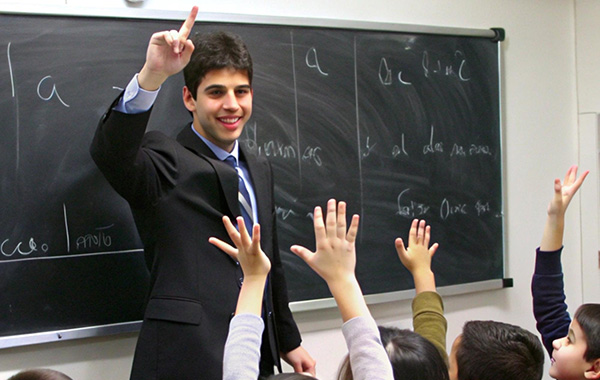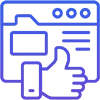What are teaching strategies?
Teaching strategies are the methods or techniques that teachers use to facilitate learning, engage students, and help them retain and apply information. These strategies are critical because they shape how content is delivered and understood by students, ensuring that diverse learning needs are met. Effective teaching strategies are not only about transmitting knowledge but also about fostering critical thinking, creativity, and independent learning among students.
The role of teaching strategies in education
Effective teaching strategies play a crucial role in the learning process, shaping how knowledge is delivered and absorbed in the classroom. By employing diverse and well-planned teaching strategies, educators can cater to the varied learning styles, abilities, and needs of students. The right strategies not only enhance student engagement but also improve their overall academic performance and personal development.
Improving student engagement
Teaching strategies like group discussions, interactive activities, and technology integration help keep students engaged, making lessons more dynamic and motivating them to learn. Teaching strategies like group discussions, interactive activities, and the integration of technology help to capture students’ attention and make lessons more dynamic. For instance, group discussions allow students to exchange ideas and viewpoints, fostering a deeper understanding of the content.
Accommodating different learning styles
With various teaching strategies, educators can cater to different learning preferences, ensuring every student learns in a way that suits them best. Teaching strategies must be flexible enough to accommodate these various learning styles. This approach not only helps students grasp the material more effectively but also ensures that no student is left behind, regardless of their preferred learning style.
Promoting critical thinking and problem-solving
Strategies like project-based learning and case studies encourage students to think critically and apply their knowledge to real-world situations. Case studies allow students to analyze real-world situations and make decisions based on their understanding. These strategies help students develop deeper learning and critical thinking skills that they can carry with them throughout their lives.
Fostering collaboration and communication
Collaborative learning activities improve communication skills, foster teamwork, and teach students to value diverse perspectives. Through teamwork, students learn leadership, cooperation, and how to resolve conflicts, all of which are valuable skills for the workplace and everyday life. These activities also create an inclusive learning environment where all students feel valued and respected.
Differentiating instruction
Differentiated instruction tailors content to meet the needs of all students, ensuring appropriate challenges for both struggling and advanced learners. This might include offering additional resources for struggling students, providing advanced tasks for high-achieving learners, or allowing students to choose how they want to demonstrate their understanding. Differentiated instruction helps students feel more confident in their learning, leading to improved academic performance and a sense of accomplishment.
Enhancing retention and application of knowledge
Teaching strategies like spaced repetition and hands-on learning help students retain and apply knowledge more effectively. Hands-on learning allows students to experience concepts firsthand, making the knowledge more tangible and applicable to real-world situations. These strategies not only help students remember facts but also enable them to use that knowledge creatively and effectively in new contexts.
Encouraging self-directed learning
Strategies like flipped classrooms empower students to take charge of their own learning, promoting independence and a lifelong love of learning. This approach promotes critical thinking, autonomy, and a lifelong love of learning. It also prepares students for the self-regulation and responsibility they will need in their personal and professional lives.
Unlock innovative teaching strategies and connect with expert educators on TeachersConnect.
The importance of teaching strategies
Teaching strategies are fundamental to the success of the learning process. They shape how students engage with content, acquire new knowledge, and develop key skills. Implementing effective teaching strategies can significantly enhance the educational experience and ensure that students are fully prepared for the challenges they will face in both academics and life.


Enhancing student engagement
Effective teaching strategies capture students’ attention and keep them actively involved in their learning. Engaged students are more motivated, attentive, and likely to retain information. Strategies like interactive lessons, discussions, and technology use can make learning more dynamic, preventing boredom and fostering enthusiasm for the subject matter.

Promoting inclusive education
Different students have different learning needs. Teaching strategies allow instructors to tailor their lessons to accommodate diverse learning styles, abilities, and paces. Whether through visual aids, hands-on activities, or auditory explanations, teaching strategies ensure that all students, regardless of their learning preferences, can succeed.

Fostering critical thinking and problem solving
The importance of teaching strategies lies in their ability to push students to think critically. Strategies like problem-based learning, case studies, and inquiry-based learning encourage students to analyze, question, and apply knowledge in real-world situations, fostering deeper learning and problem-solving abilities.

Improving student retention and understanding
Teaching strategies that encourage active participation, such as summarizing, group work, and practical applications, help students better understand and retain information. These strategies ensure that students don’t just memorize facts, but gain a deeper understanding that can be applied in future learning and real-life situations.

Building essential life skills
Effective teaching strategies go beyond academic knowledge. They help students develop important life skills such as teamwork, communication, and leadership. Collaborative strategies, peer teaching, and group projects promote cooperation and respect for diverse ideas, preparing students for success in a globalized world.

Encouraging lifelong learning
Good teaching strategies inspire a love for learning. Approaches like flipped classrooms and student-led inquiry motivate students to take responsibility for their own learning, fostering self-direction and curiosity that continue beyond the classroom.

Adapting to technological advancements
Incorporating modern teaching strategies that utilize technology ensures students are prepared for the digital world. Technology-driven strategies, such as online learning platforms and digital collaboration tools, provide students with the skills they need to thrive in a rapidly changing technological landscape.

Enhancing motivation and confidence
Effective teaching strategies help boost students’ motivation and confidence. By offering clear goals, timely feedback, and encouraging a growth mindset, teachers can inspire students to persist through challenges and believe in their ability to succeed. This increased self-confidence can lead to a more positive attitude toward learning.

Facilitating assessment and feedback
Teaching strategies play a crucial role in facilitating meaningful assessment and feedback. Formative assessment strategies, such as quizzes, peer reviews, or reflections, help teachers identify areas where students may need further support. Continuous feedback through different strategies allows for timely interventions, promoting ongoing improvement.

Fostering a positive learning environment
Teaching strategies are instrumental in creating a positive, inclusive classroom culture. Techniques such as establishing clear expectations, promoting respect, and using restorative practices can help create an environment where all students feel valued and supported. A positive learning environment fosters collaboration, reduces anxiety, and encourages students to take risks in their learning.
Become a member of TeachersConnect today and unlock a wealth of resources designed to elevate your teaching. By joining TeachersConnect, you’ll connect with a supportive community of educators, share ideas, and continuously grow.
Key characteristics of effective teaching strategies
Effective teaching strategies, share several key characteristics that enable them to be adaptable to various teaching contexts, subjects, and student needs. These characteristics ensure that teachers can create a dynamic learning environment that addresses the diverse preferences and capabilities of students, ultimately fostering an engaging and productive educational experience. Let’s explore these essential characteristics in greater depth.


Flexibility

Student-centered

Variety and diversity

Clear structure and objectives

Assessment-driven

Engagement and motivation

Collaborative and social learning
Effective teaching strategies often emphasize collaborative and social learning. Learning is not just an individual pursuit; it can be deeply enriched when students work together. Collaborative learning encourages students to communicate, share ideas, solve problems together, and learn from one another. This fosters a sense of community within the classroom and builds essential life skills such as teamwork, leadership, and empathy. Collaborative methods such as group discussions, peer teaching, and project-based learning allow students to engage with diverse perspectives, leading to deeper understanding and greater retention of knowledge.
Transform your teaching with proven strategies! Sign up for TeachersConnect and enhance your classroom experience to the next level Connect with teachers now
Benefits of using a teacher planning efficiency platform
Using a teacher planning efficiency platform offers a range of benefits, all geared toward enhancing teaching quality while reducing workload. In today’s fast-paced educational environment, teachers are often juggling multiple responsibilities, from lesson planning to grading and everything in between. A teacher planning efficiency platform can significantly ease these burdens by streamlining tasks and enhancing productivity. Here’s how using such a platform can benefit educators.

Time-saving tools
A teacher planning platform provides various time-saving features that allow educators to quickly create, organize, and adjust lesson plans. Templates, pre-designed lesson structures, and automated scheduling features reduce the time spent on administrative tasks, enabling teachers to focus more on what matters most—teaching and student engagement.
Organized lesson plans
With a planning platform, teachers can create and store their lesson plans in one central location. This organization ensures that educators can easily access their plans, make revisions, and track progress across multiple subjects or terms. The ability to structure and align lessons with curriculum standards helps teachers maintain consistency and clarity.
Collaboration and sharing
Many platforms offer collaborative tools that allow teachers to share lesson plans, teaching strategies, and resources with colleagues. This fosters a supportive teaching community where teachers can exchange ideas, learn from one another, and even co-plan lessons. Collaboration enhances the quality of teaching and helps educators stay inspired.
Customization for individual needs
A teacher planning platform can be tailored to meet the unique needs of each educator. Whether you’re working with diverse classrooms, incorporating personalized learning approaches, or aligning with specific curriculum requirements, a planning platform allows for flexible customization. Teachers can easily modify their plans to cater to different student groups or teaching contexts.
Data-driven insights
Stress reduction
By streamlining lesson planning and organization, these platforms help reduce stress and improve work-life balance for educators. With clear plans and better organization, teachers can approach their work with confidence, knowing they have the tools to manage their responsibilities effectively.
Access to resources
Most planning platforms provide a wide range of resources, including educational materials, teaching strategies, multimedia content, and assessment tools. This vast library helps teachers save time on resource creation, while ensuring that the content they use is diverse, up-to-date, and aligned with best practices.
Increased efficiency in assessments and grading
Planning platforms often integrate assessment features, allowing teachers to easily design, distribute, and grade assignments. These platforms can automate grading for certain types of assessments, offering teachers more time to focus on personalized feedback and student development.
Improved communication with stakeholders
A teacher planning platform can facilitate better communication with students, parents, and school administrators. Many platforms include features for sharing lesson plans, student progress reports, and upcoming assignments, helping everyone stay informed and engaged in the learning process.
Ready to take your teaching to the next level? TeachersConnect offers an innovative platform designed to enhance your planning, foster collaboration. Subscribe to a paid membership and gain access to a supportive community of educators.

Enhancing teacher planning efficiency through innovative platforms
In today’s fast-paced education environment, teachers are constantly looking for ways to streamline their work, improve classroom outcomes, and focus on student success. One of the most powerful tools to help achieve these goals is the use of teacher planning efficiency platforms. These platforms are designed to assist educators in organizing their teaching plans and resources more effectively, so they can spend less time on administrative tasks and more time on teaching and engaging with their students.
What is a teacher planning efficiency platform?
A teacher planning efficiency platform is an online tool or software that simplifies and organizes the process of lesson planning, curriculum development, and resource management. These platforms often offer an array of features that help educators create and share lesson plans, access a library of educational resources, track student progress, and collaborate with colleagues. By centralizing these tasks in one location, these platforms allow teachers to work more efficiently and effectively, ultimately improving classroom performance.
Features of an effective teacher planning platform
An effective teacher planning platform is more than just a digital notebook; it is a comprehensive tool that offers a variety of features to maximize a teacher’s time and energy.
Key features of a teacher planning efficiency platform include:
Lesson plan templates:
Pre-designed templates that make it easier for teachers to create customized lesson plans. These templates save valuable time by providing a starting point, allowing teachers to quickly adapt and tailor their lessons to suit the needs of their students.
Collaboration tools:
Features that enable teachers to work together, share ideas, and co-develop lesson plans. These collaboration tools foster a sense of community among educators, encourage the exchange of best practices, and allow for joint planning, enhancing the overall teaching experience.
Calendar integration:
A built-in calendar feature that helps teachers manage their schedules, deadlines, and important events. This integration ensures that teachers can easily stay organized and on top of all tasks, reducing the risk of forgetting critical deadlines or events.
Resource libraries:
Access to a comprehensive library of teaching resources, such as worksheets, activities, multimedia content, and more. These resources enrich lesson planning by providing teachers with a diverse range of materials that can be seamlessly integrated into their lessons, making learning more engaging and effective.
Progress tracking and analytics:
Tools that allow teachers to track student progress over time, giving them valuable insights into how well their students are understanding the material. This feature helps teachers adjust their teaching strategies, identify areas where students may need additional support, and provide more personalized instruction.
Customizability:
The ability to personalize the platform according to each teacher’s specific needs and preferences. Teachers can organize their lesson plans by unit, adjust the platform layout, or customize features to align with their workflow, making the platform more intuitive and efficient for their individual teaching styles.
Explore TeachersConnect platform’s key features designed to streamline your teaching process. Sign up today and enhance your classroom experience with easy-to-use templates, collaborative tools, and valuable resources.
Efficient classroom planning: strategies for success
Classroom planning is an essential part of teaching that helps educators create a structured and productive learning environment. By using effective planning techniques, teachers can maximize classroom time and ensure that students receive a focused, organized, and engaging learning experience.
What is classroom planning efficiency?
Classroom planning efficiency refers to the ability to prepare and organize lessons, activities, and resources in a way that maximizes learning outcomes while minimizing wasted time and effort. It involves setting clear objectives, aligning instructional strategies with those goals, and organizing materials and assessments in advance to ensure smooth lesson delivery. An efficient classroom planning process helps teachers spend less time on repetitive or time-consuming tasks and more time focusing on the actual teaching and student interaction. This includes designing effective lesson plans, creating relevant teaching materials, scheduling lessons appropriately, and assessing students’ progress in a way that aligns with curriculum standards.
Classroom planning efficiency can also be enhanced by utilizing digital tools, collaborating with colleagues, and using pre-designed templates and resources. By streamlining the planning process, teachers can ensure smoother class management, better lesson delivery, and improved student learning experiences.
Why does efficient classroom planning matter?
- Effective time management: When teachers plan efficiently, they can manage their time better, reducing stress and avoiding last-minute scrambling to prepare materials or activities. Teachers can dedicate more time to engaging with students and less time on administrative tasks.
- Enhanced student engagement: Well-planned lessons are more engaging because they are organized and purposeful. Students are more likely to remain focused and motivated when they understand the flow of the lesson and can easily grasp the objectives.
- Better academic outcomes: Efficient classroom planning helps students succeed academically. When lessons are carefully organized, and clear goals are set, students are better equipped to learn and retain the material. This structured approach provides them with a roadmap for success.
- Addresses diverse student needs: Classroom planning allows teachers to create differentiated lessons that cater to the unique learning styles and needs of all students. By planning ahead, teachers can design flexible learning activities that accommodate students’ varying levels of readiness, interests, and abilities.
Unlock the full potential of your teaching with TeachersConnect, you can streamline your classroom planning and enhance your teaching strategies.
Techniques for streamlining classroom planning
Efficient classroom planning is essential for creating a productive learning environment and ensuring that both teachers and students have a smooth and engaging educational experience. By streamlining the planning process, teachers can save time, reduce stress, and focus more on delivering high-quality lessons. Here are some effective techniques for streamlining classroom planning:

Use pre-designed templates
Pre-designed lesson plan templates are a great way to streamline planning. These templates provide a structured outline, allowing teachers to focus on customizing the content and adapting it to their students’ needs rather than starting from scratch each time. Many platforms offer templates aligned with curriculum standards, which helps save time and ensures consistency.
Incorporate technology and digital tools
Technology can significantly simplify classroom planning. By using digital tools such as lesson planning platforms, teachers can easily organize, adjust, and access lesson plans from anywhere. Many platforms also allow for scheduling, resource sharing, and tracking student progress, all in one place. This eliminates the need for paper-based systems and makes planning more accessible and efficient.
Create a weekly or monthly planning template
Rather than planning individual lessons one by one, consider creating a weekly or monthly planning template that outlines your objectives, materials, and key activities. This long-term view helps teachers stay organized, avoid last-minute scrambling, and provides a more holistic approach to curriculum planning. It also makes it easier to identify patterns and make necessary adjustments.
Use collaborative planning
Collaboration with fellow educators can make planning more efficient. By co-planning lessons, sharing resources, and discussing best practices, teachers can reduce the time spent reinventing the wheel. Collaboration also ensures that teachers can learn from each other and align their lessons for a more cohesive learning experience across subjects.
Batch similar tasks together
Batching tasks is a great way to streamline your planning process. For example, set aside dedicated time for creating all lesson materials or resources for the week, or focus on grading a batch of assignments at once. This minimizes distractions and maximizes efficiency, allowing teachers to complete related tasks without constant switching.
Automate where possible
Take advantage of tools that automate certain parts of the planning process. For example, digital platforms may allow for automatic scheduling of assignments or generate progress reports based on student data. Automation can save teachers hours of administrative work, giving them more time to focus on teaching and student engagement.
Leverage resource libraries
Accessing pre-made teaching materials such as worksheets, activities, and multimedia content from resource libraries is another time-saving strategy. These resources are often aligned with curriculum goals and can be quickly adapted to suit lesson plans, reducing the time spent on content creation.
Plan with flexibility in mind
While planning is essential, it’s also important to build flexibility into the process. Not every lesson will go as expected, and students may need more time on certain topics. By leaving room for adjustments and being prepared with backup activities or materials, teachers can streamline the process while still being responsive to students’ needs.
Encourages collaborative learning
Differentiated strategies often involve group work, where students with diverse abilities can collaborate and support one another. This fosters teamwork, communication skills, and respect for diverse perspectives, which are crucial life skills. Collaborative learning through differentiation promotes a sense of community and encourages peer-to-peer learning.
Reflect and revise
After each lesson or unit, take time to reflect on what worked and what didn’t. Making adjustments based on student feedback and performance can help improve future lesson plans. By consistently refining your approach, you create a more efficient planning process that gets easier with time.
TeachersConnect offers resources and tools that help educators engage students, improve outcomes, and create a dynamic teaching environment. By using techniques tailored to students’ interests and needs, teachers can enhance classroom focus and reduce disruptions. Stay updated with the latest trends at teachersconnect.com to transform your teaching approach.





